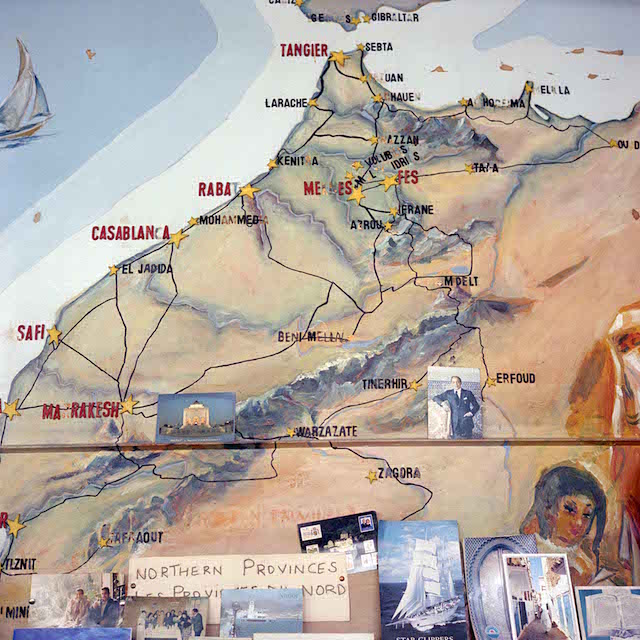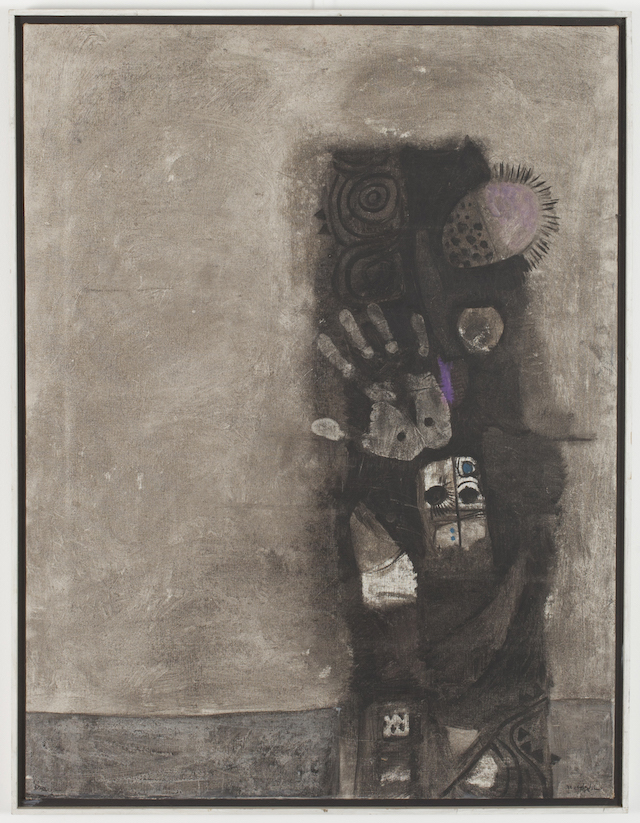As Arab art collections go, the independent Barjeel Art Foundation might be one of the most extensive. The United Arab Emirates-based organization maintains and exhibits the personal art collection of Sultan Sooud Al-Qassemi, with an aim to develop the art scene in the Arab region, but also communicate its depths worldwide. In one of their recent exhibitions, Imperfect Chronology: Mapping the Contemporary I, Barjeel partnered with London’s Whitechapel Gallery to showcase media-based art made during the 1990s.
Videos by VICE
Featuring work from Egypt, Lebanon, Morocco, Palestine, United Arab Emirates and the United States, Imperfect Chronology explores issues like migration, media representation, and the aftermath of war, amongst other topics. Dr. Omar Kholeif, Manilow Senior Curator at the Museum of Contemporary Art Chicago (formerly Curator at Whitechapel Gallery) tells The Creators Project that he proposed the Barjeel Art Foundation’s collection to Whitechapel as part of a program of opening up private and public art collections to be seen by the public.

Yto Barrada, Northern Provinces, 2009. BAF collection.
“I believed it to be one of the most holistic collections of Arab art with a strong focus on both the modern and the contemporary period, unlike many other collections which have chosen to focus purely on the modern or contemporary period in Arab art,” Kholeif says. “The show took me two years to research, [and] I made regular visits to Sharjah and Dubai where the collection is held, I read about the various histories and trajectories of the different figures, and proposed a four-part show that would attempt to map out a suggested route or entry into understanding Arab art.”
The first two chapters were called Debating Modernism Parts I and II, while the third and fourth chapters are called Mapping the Contemporary I and II. In the first chapter, artists wrestled with the European tradition and argued against. In the second chapter, the featured art emerged out of post-independence in the Arab countries.

Kamal Boullata, La Ana Illa Ana, 1983, silkscreen.
Chapters 3 and 4 focus on how technologies, especially the popularization of photography and video, led to new forms of expression. For Arab artists these were media that allowed them to explore and critique trade routes, borders and “the precarious nature of the urban environment in the region.”
In addition to photography, these Arab artists also created sculptures and installations. According to Kholeif, they engaged in social critique, “[imagining] imagined possibilities for a global future which might never materialize.”
For that reason, Kholeif says that all of the works in Imperfect Chronology are important for a variety of reasons. He is especially fond of Akram Zaatari’s Her+Him Van Leo because it tells the personal story of the great Egyptian-Armenian studio photographer Van Leo. Blending fact and fiction, Kholeif says one can read the whole history of photography through the work.

GCC Collective, Micro Council, 2013. Wood, brass, acrylic glass, glass.
Kholeif is also very fond of Yto Barrada’s photographs, which he describes as both critical and sublime. Joana Hadjithomas and Khalil Joreige’s Faces series, which helps commemorate the lives of those martyrs who lost their lives in Lebanon’s civil war, is also particularly vital.
In Study for the Breakup — Maps (2010), displayed in a museum-like vitrine table, artist Michael Rakowitz pairs a map of Jerusalem with a map of Liverpool, along with a Beatles tour circuit and setlist, a piece of stone from the Cavern Club (where the Beatles played), and a piece from the Western Wall of Jerusalem. As Kholeif suggests in a video tour of the exhibition, Rakowitz’s piece explores the connection between the breakup of The Beatles and pan-Arabism.

Iman Issa, Proposal for a Crystal Building, 2014.
In Maha Maamoun’s Domestic Tourism II (2008), the artist narrates a history of popular Arab culture in Egypt. For the video installation, she edits together clips from popular Egyptian films that feature shots of the pyramids.
“Like any exhibition that I make, and I am an art historian, I only show works by artists that are meaningful, works that tell different stories and that open up counter perspectives that help and allow us to be more open citizens—an exhibition done well helps us see the world differently,” Kholeif says. “The perspectives of these artists, some based locally in the Arab world, some based in the diaspora, speaks to the polyphony and multiplicity of Arab experience and Arab identity—one that cannot be flattened into a single form or idea.”

Dia Azzawi, Mask of the Pretenders, 1966.
Imperfect Chronology: Mapping the Contemporary I runs until August 14th at Whitechapel Gallery in London.
Related:
Inside the First Arabic Museum of Contemporary Art
Arabic Calligraphy Explores Identity and Loss
Projected Arabesque Textiles Adorn a Middle Eastern Waterfront
